Everyone talks sustainable BUT how sustainable are fabrics?
Did you know, clothing is responsible for 3% to 6.7% of global human-caused carbon emissions?
And this is not only from the production of the fabric, but also the care that follows your item of clothing after purchase.
Washing our clothes makes up most of the environmental impact caused by clothing, and this impact varies depending on the fabric.
So, if you can skip a wash, do it!
There is no such thing as a 100% sustainable fabric, but some fabrics are
much better than others. Among the most sustainable fabrics are recycled
and organic cotton, organic hemp, organic linen, recycled wool, lyocell, and
recycled polyester.
When determining how sustainable a certain type of fabric is, consider
the amount of resources used to produce the material and the life cycle of the
product on the environment.
Which fabrics are generally considered sustainable?
As a rule of thumb, natural fibers such as hemp, linen, and cotton have a lower environmental footprint than any type of synthetic fibers, which are derived from fossil-fuels.
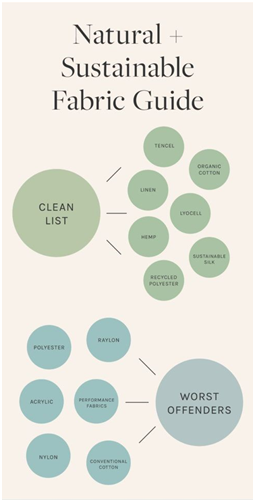
So, if you can skip a wash, do it!
Let's talk about fabrics
One of the most essential elements in our daily lives.
This topic sparks conversation and various perspectives, but after searching through many sources, I've put together some key points about fabrics that seem to resonate with most.
When it comes to sustainable fabrics, there's no one-size-fits-all approach. What works for one brand or person may not work for another, and that's okay!
The important thing is that we're all working towards a common goal of protecting our planet. 🌎🌍🌏
Remember, nothing is perfect!
Most sustainable fabrics
Organic cotton & recycled cotton
A more sustainable alternative to conventional cotton is the organic version. Organic cotton is grown without all the harmful pesticides and produced without dangerous chemicals that normal cotton uses.
However, the most sustainable way to wear cotton is in its recycled form.This fabric is made with post-industrial and post-consumer waste and uses far less water and energy to produce in comparison with conventional and organic cotton.
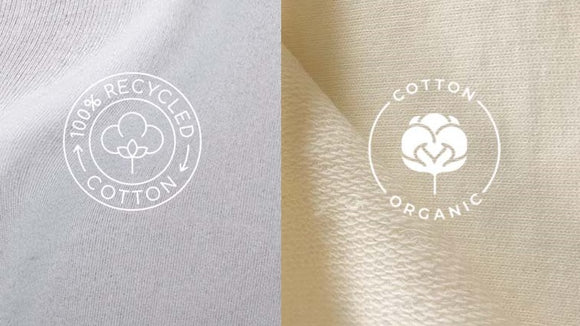
organic cotton & recycled cotton

organic linen
Organic linen
Linen comes from the flax plant, which is a resilient, drought-hardy plant with a low environmental footprint. According to studies, flax uses significantly less water than cotton, while producing higher yields. Plus, flax can be grown without the use of pesticides or herbicides.
On the down-side linen is difficult and expensive to manufacture, and this is reflected in its higher price point. On the plus side, linen is highly breathable, making it an excellent material for warm climates.
Organic hemp
Hemp fabric is derived from the hemp plant, which is a type of cannabis plant containing 0.3% THC or less. And like the flax plant, hemp is easy to grow, requiring little water or pesticides, resulting in a low environmental footprint.
Hemp is naturally insulating and cooling with excellent durability, as well as protective from UV rays. The plant itself is extremely resilient and requires little water to grow. It returns 60-70% of nutrients to the soil that it lives in. When spun into a fabric, the process requires no chemicals.
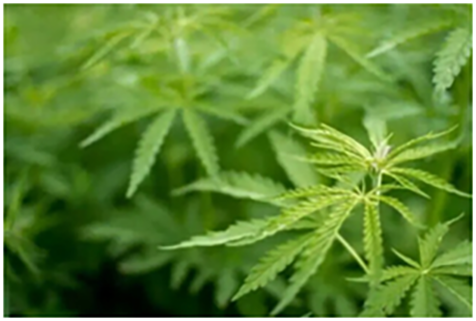
organic hemp
Recycled wool & regenerative wool
Wool is known for its durability, warmth, and comfort. However, virgin wool is resource-intensive to produce, as it comes from the coats of sheep. Sheep farming is responsible for considerable amounts of greenhouse gasses, so it is not considered a sustainable practice.
One alternative to virgin wool is recycled wool, which has a lower environmental impact by reusing materials already in circulation. Recycled wool is just as strong as virgin wool, and, can be recycled many times over.
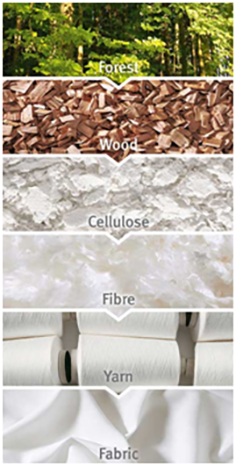
tencel lyocell
Tencel lyocell
The production of Tencel uses only one-third of the water that is needed to produce rayon, and over 99% of the water and solvents used are able to be recycled!
This greatly reduces the release of dangerous chemicals into the surrounding environment. Plus, the solvents used in Tencel production are non-toxic, unlike those of viscose.
Tencel is on the more expensive side of things, but it’s very durable and will last a long time. You get what you pay for! While it is not widely available for production yet, the industry is growing fast.
Recycled polyester(rPET)
Recycled polyester is one of the lower impact fabrics available on the market. Recycled polyester (rPET) doesn’t come from polyester textiles; but made by recycling PET plastic bottles, that would have gone to landfill. The recycled version of polyester is a much more sustainable option,compared to virgin polyester that is derived from fossil fuels. Recycled polyester uses less water and energy, and reduces our reliance on oil-based products.
According to Green Story, the production process for recycled polyester uses 35% less water than the regular material. The part that requires the most water is the dyeing process.
An issue with recycled polyester is that like virgin polyester, it also releases microplastics during washing. So, wash your clothes less often and use a washing bag that prevents microplastics from entering the waterways.
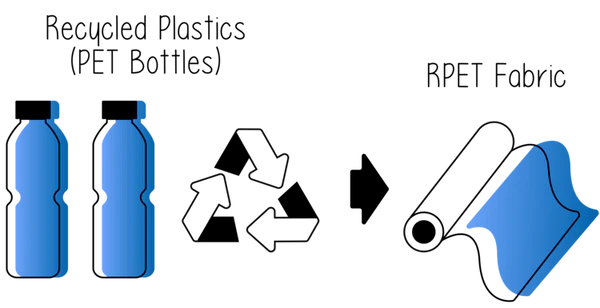
Show custom content to provide an overview of the image and heading
Econyl
Econyl is a better alternative to nylon. Made from waste materials such as industrial plastic and fishing nets. The process is closed-loop, which seems to be a trend in all of the future fabrics.
As this material is made from plastic, small particles may be released when a clothing item is washed. Econyl is most sustainable in the form of items that do not need to be washed often, such as sneakers or backpacks.
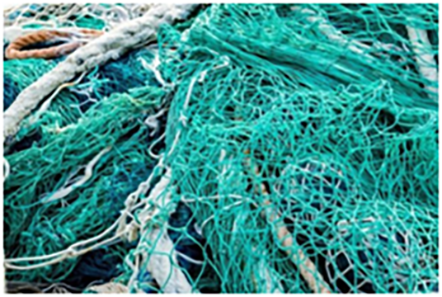
Econyl made from industrial plastic and fishing nets
Econyl
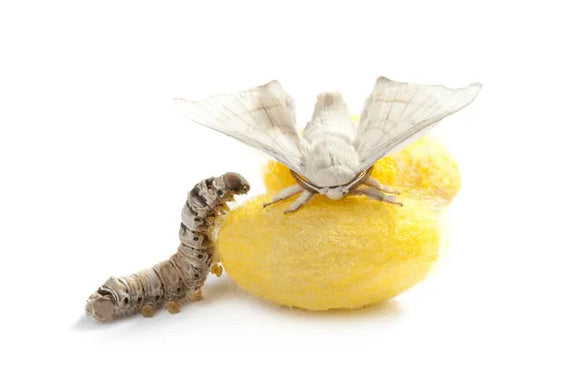
raw silk noil: peace silk: ahimsa silk
Raw silk noil: peace silk: ahimsa silk
Raw silk noil, also known as organic silk, peace silk, or ahimsa silk, is created without the use of any treatments or chemicals that include insecticides, pesticides and synthetic fertilisers.
Unlink typical silk manufacturing, raw silk noils
made from silkworms casings which are gathered after the silkworms have emerged and move on, therefore cruelty free. Generally, silk production involves killing silkworms by throwing them into a vat of boiling water, not so nice.
Raw silk noil is also naturally derived and biodegradable.
Least sustainable fabrics - Fabrics to avoid
Wondering how to lower your fashion footprint? The fastest way would be to avoid these least sustainable fabrics whenever there is another option.
Fabrics worst for people + planet include polyester, conventional cotton, viscose, nylon, and acrylic.
Some of these fabrics are incredibly common and highly pervasive; it’s unlikely you’ll be able to avoid them entirely.
Synthetic fibers – polyester, nylon, rayon, acrylic
Polyester
Polyester is the least sustainable fabric. And sadly, it is used extensively in fashion, as it is cheap and durable.
To produce polyester large amounts of water is used in the energy-intensive process. Then, after production the contaminated water, with microfibers and dyes, is usually flushed back into the waterways causing harm to plants, animals, and humans.
Polyester releases microfibers (a type of microplastic) every time it is washed. The microfibers end up in water supplies and can’t be filtered out. Eventually ending up in rivers, streams, and oceans where it can be ingested by wildlife. What’s alarming is, these microfibers never fully break down in the environment.
Shockingly, each year, around 61 million tonnes of polyester is produced globally, representing a 54% market share, more than all other combined fibers produced.
Would be good if we could all work together to lower the polyester market share. 😊
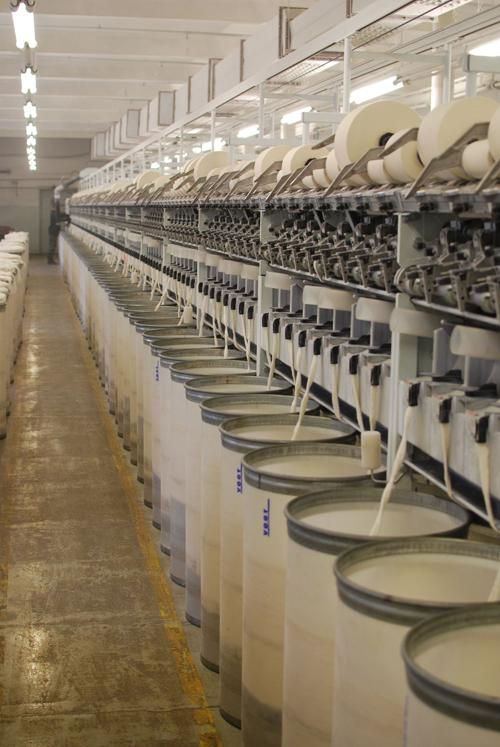
polyester manufacturing machinery
fabrics to avoid: polyester
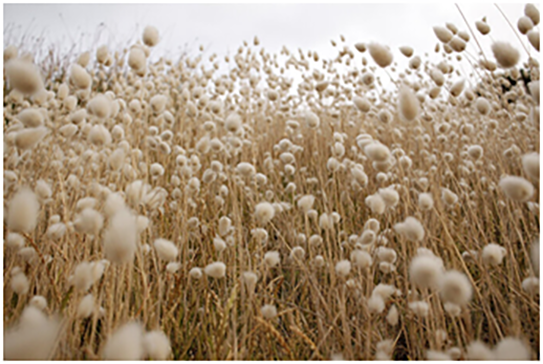
conventional cotton
Conventional cotton
Cotton is a natural fiber, so obviously it’s a biodegradable and sustainable option right? Unfortunately, cotton production is incredibly taxing on the environment.
Conventional cotton is unsustainable due to how incredibly taxing it is on the environment. It takes about 6000 litres of rainwater to produce enough cotton for a t-shirt or pair of jeans.
Additionally, conventional cotton is grown with tons of synthetic fertilizers, pesticides, and herbicides. These may result in higher yields, but leave the soil barren after harvesting. Plus,☹ synthetic pesticides in particular
have been linked to increased cancer risk in workers and their spouses. These chemicals are washed away by rain and irrigation, ending up in the soil and water supply where they can endanger humans, wildlife, and plants.
Rayonaka viscose
When it comes to fabrics, apparently the primary culprit of greenwashing
is viscose, which is made from plants but terrible for the environment. Viscose is a type of rayon fabric; an umbrella term for semi-synthetic fabrics derived from plant material. Other rayon fabrics include modal and lyocell.
Most viscose fabric is derived from wood pulp. From fast-growing trees like beech or eucalyptus. And now also being made from plants like bamboo or soy. It is made by dissolving cellulose (the main constituent of plant cell walls) into a chemical solution and then spinning it into threads. The fiber itself is biodegradable and non-toxic, but the way that it is manufactured can cause harm to factory workers as well as the environment.
The fast-fashion industry often uses rayon to produce cheap clothing using large amounts of water and energy as well as a highly intensive chemical processes. These processes release dangerous chemicals into the surrounding air and waterways, which can lead to health problems in both workers and local communities.
Also, the demand for this plant-based material increases the demand for plants! Many areas are suffering from deforestation due to the collection of trees to produce rayon, including endangered and protected forests. Animals that depend on these trees for their homes are facing habitat loss, which is threatening both endangered and non-endangered species.
Some of the animals that have been placed on the endangered species list specifically due to the fast fashion industry are orangutans, tigers, rhinoceroses, and elephants of Sumatra; the last place in the world where all of these animals co-exist.

Show custom content to provide an overview of the image and heading
Synthetic fabric: Nylon
Nylon is another synthetic fiber that is commonly found in tights and active-wear. Like polyester, nylon is derived from crude oil (and partially
from petroleum), therefore is non-biodegradable. Similarly, nylon releases microfibers every time it is washed.
The production of nylon itself is unsustainable not only because it relies on non-renewable fossil fuels, but because it is energy-intensive and water-thirsty. Moreover, nylon production releases nitrous oxide (N2O), a greenhouse gas that is 265 times more potent than carbon dioxide and remains in the atmosphere for 121 years on average.
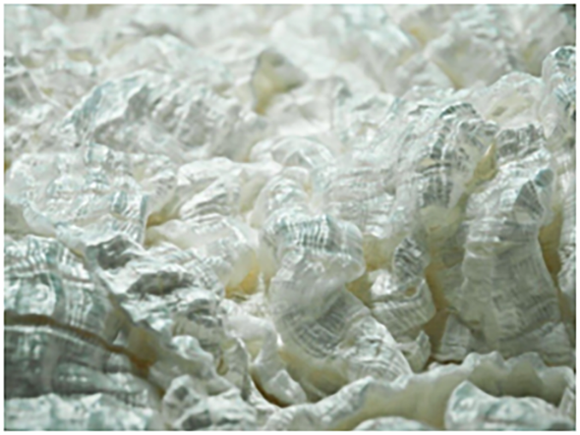
unsustainable fabric: acrylic
Unsustainable fabric: Acrylic
At this point, it is becoming obvious that any fabric derived from fossil fuels is considered unsustainable. Acrylic, commonly used in place of wool in sweaters and rugs, is made using highly toxic chemicals that can be dangerous to the health of factory workers. The key ingredient, acrylonitrile, can enter a body through skin contact or inhalation. This doesn’t necessarily mean you’ll get sick from wearing an acrylic sweater; but the toxic chemicals are extremely dangerous for the workers who are exposed to them daily.
Moreover, like polyester, nylon, and viscose, acrylic is non-biodegradable and will remain in landfill for hundreds of years to come. Estimates suggest that as much as 20% to 35% of all primary source microplastics in the marine environment are fibers from use of synthetic clothing.
It is a little confronting when you read about these unsustainable fabrics. We put them against our skin, daily. ….. makes me think, it can’t be good 😬
Bamboo, is it an eco-friendly fabric?
Bamboo it seems is a little complicated, of course!.
Bamboo itself is sustainable. It is the fastest-frowing plant and can grow in many different conditions. It’s a versatile and renewable source and while bamboo toothbrushes and chopping boards might be sustainable, sadly, bamboo fabric is far from that.
There’s a misconception that bamboo fabric is very sustainable but the process that turns bamboo into fibers is very intense and not sustainable.
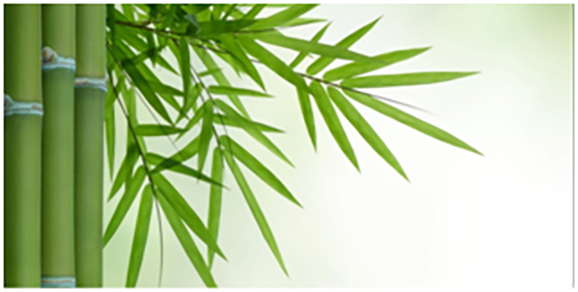
While bamboo can be manufactured more sustainably, such as with bamboo linen, but this is not really happening. Most bamboo originates from China, and there is little transparency with the farming of it. So, while bamboo is eco-friendly in itself, it can’t be known if farmers follow sustainable practices. For these reasons, GOTS does not currently certify bamboo, even through it is a natural fiber.
So it is probably best to avoid bamboo in your clothes unless you know how it was made.The best alternative to bamboo fabric is hemp.It is also fast-growing and needs little water.
Future green fabric spiñatex
Another innovative material recently developed is called Piñatex. It is a much more sustainable alternative to leather that supports local fruit farmers. The parts of a pineapple that use to be discarded can be manufactured into something we can wear!
In comparison to leather, Piñatex requires no additional raw materials for production and uses only non-toxic chemicals which are then reused through a closed-loop system. A closed-loop system continues to use the original input and requires no extra material.
However, it’s not the perfect option as the final material is not actually biodegradable because it contains a percentage of petroleum. Additionally, cultivating pineapples is resource intensive and if the demand for Piñatexrises to quickly, the results could be deforestation.But it is a much better option than leather! 😊
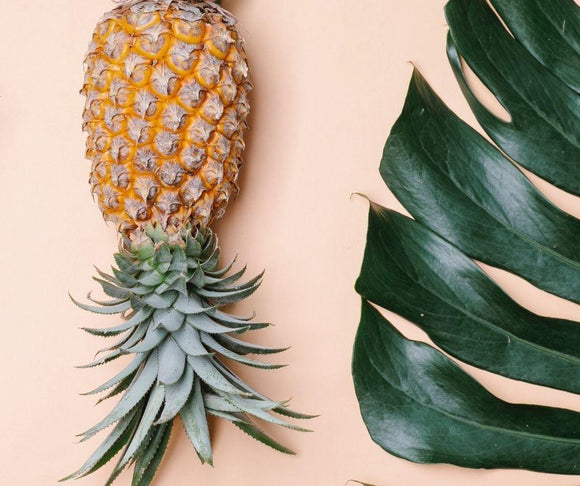
future green fabricspiñatex
Become a more conscious shopper!
Always check the label or read the product description. Don’t turn a blind eye. Be aware of what you are buying.
We can all play our part and shop more sustainably. Try to choose sustainable fabrics as much as you can and follow the principles of slow fashion instead of fast fashion.
Read about the brands approach to sustainability practices before purchasing to see if your happy with their motivations.

